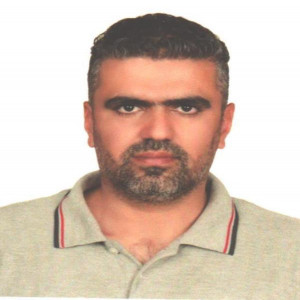Published Journal Articles
2024
Positive thinking and negative thinking among students practicing and non-practicing sports activities
2024-04
JOURNAL OF SPORT SCIENCES - Diyala University (Issue : 16) (Volume : 59)
The study aimed to identify the differences between the theoretical mean and the answers of the research sample in general in the degree of positive thinking and negative thinking among a sample of students practicing and non-practicing sports activities at the University of Zakho. The sample for the current study included (70) students from the Faculty of Education at the University of Zakho, and it was represented by (40) students from the Department of Physical Education who practice sports activities, as well as (30) students from the Department of Psychology who do not practice sports activities. The study conducted using the descriptive method, due to its suitability to the nature of the research. The data processed using (SPSS) as a statistical package by the researcher, and the study resulted in the members of the research sample generally enjoying a high level of positive thought as opposed to negative thought. The results also showed that students who practice sports activities have a higher level of positive thinking than students who do not practice sports activities. Finally, the study showed there are no differences between students who practice sports activities and students who do not practice sports activities in the level of negative thinking. The researcher concluded with a set of recommendations as follows: 1-Conducting periodic tests to evaluate the degrees of positive and negative thinking among students of both departments. 2-Creating a psychological climate that enhances the positive aspects as well as reduces the negative aspects for students of the two sections of the Department of Education at the University of Zakho. 3-The …
Analysis of the Relationship between Certain Biokinematic and Goniometric Variables of the Linear Smash with Explosive Force Upwards, Forwards, and in Volleyball Shooting
2024-01
ASCARYA Journal of Islamic Science, Culture & Social Studies (Issue : 4) (Volume : 1)
Linear smash, a potent offensive weapon in volleyball, demands complex biomechanical coordination and techniques. This study aimed to identify the biokinematic and goniometric variables of a linear smash and explore their relationship with explosive strength during performance. The research sample comprised 11 female volleyball players from the Sanharib Club. Physical tests measured explosive strength through vertical/forward jumps and medicine ball throws. The biokinematic variables included center of mass elevation/displacement, arch depth, movement time, and velocities. Goniometric variables measured the joint angles during execution. The video analysis software extracted variable values during players' smash attempts. Key findings revealed significant inverse correlations between explosive vertical jump strength and horizontal center-of-mass distance (-0.911) and between explosive medicine ball throw strength and horizontal distance (0.891). Additionally, a positive correlation existed between medicine ball throw strength and shoulder joint angle at the maximum arch (0.82). The vertical center of mass elevation was inversely correlated with the forward jump distance (-0.776). Strong but insignificant relationships emerged between variables such as horizontal speed/medicine ball throw and takeoff-landing distance/jump time. The results highlight the importance of the explosive strength for upward/forward propulsion and proper joint angles for efficient energy transfer during smashing. Recommendations include focusing on correlated variables through targeted training, utilizing joint ranges of motion, and incorporating additional biodynamic factors. This study provides insights into optimizing the linear smash through biomechanical analysis and training interventions.
Back
